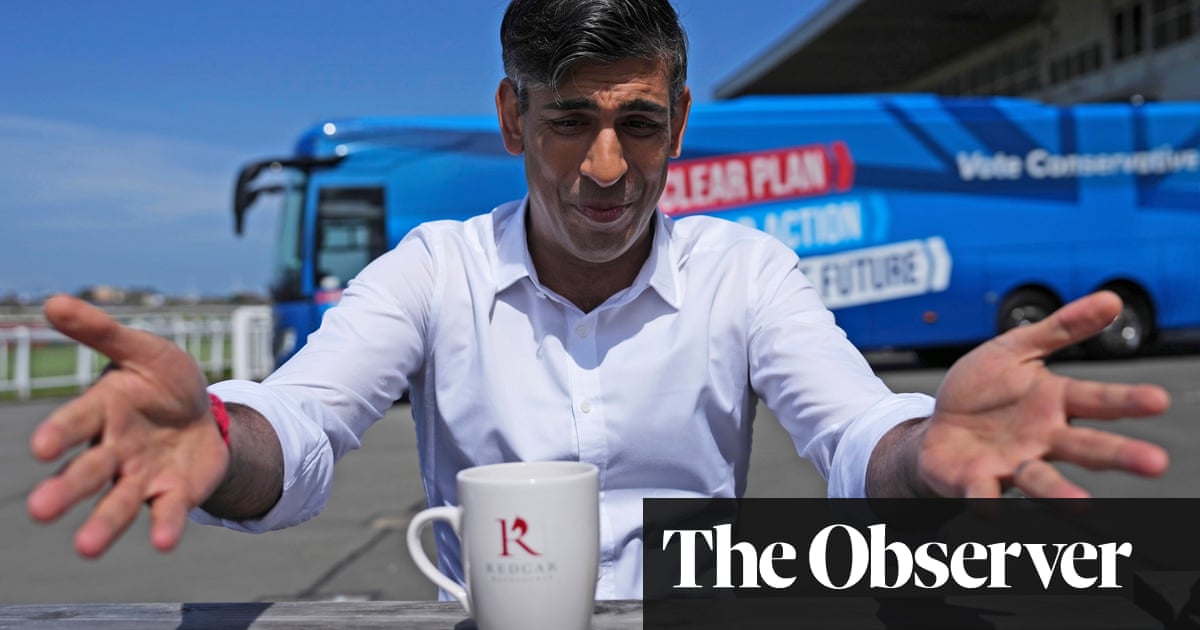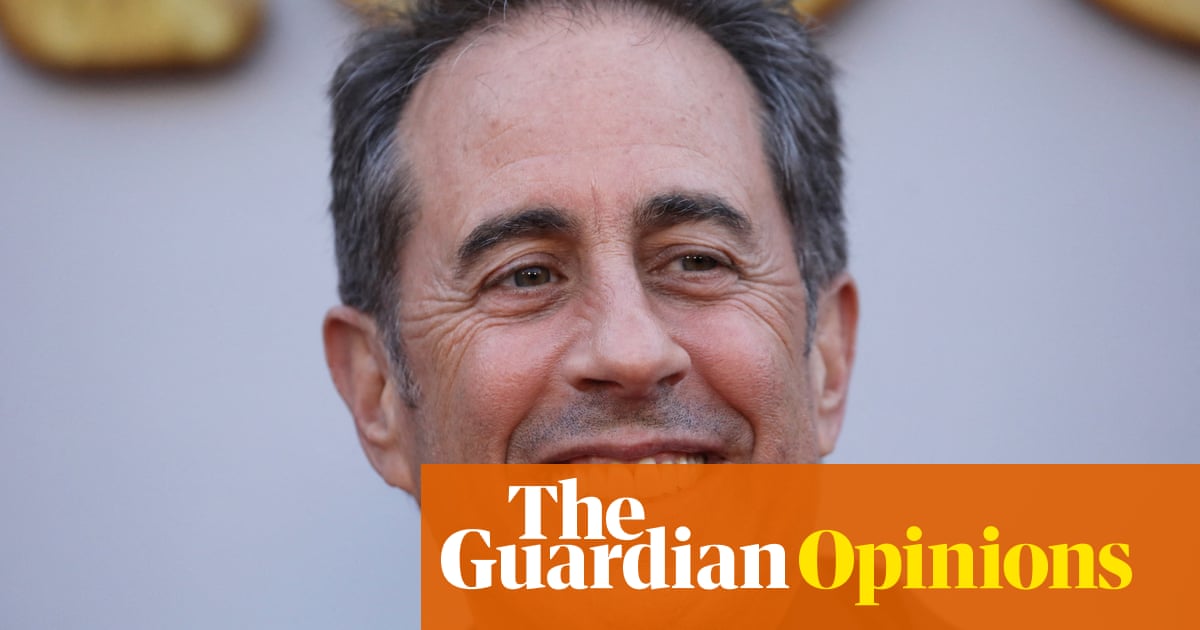The Tory general election campaign hit more trouble on Saturday as Rishi Sunak faced accusations of using levelling up funds to win votes and Labour opened its biggest poll lead since the disastrous premiership of Liz Truss.
As Sunak tried to fire up his party’s campaign before the first crucial TV debate with Keir Starmer on Tuesday, it emerged that more than half of the 30 towns each promised £20m of regeneration funding on Saturday were in constituencies won by Tory MPs at the last election.
Some 17 of the £20m pots went to towns in areas won by the Conservatives in 2019, although two of those were no longer held by Conservative MPs when the general election was called.
Just eight awards were made to towns in Labour seats, although many of the party’s strongholds tend to be in more deprived areas in need of levelling up money.
The funding pledge led to accusations from Sunak’s opponents of “pork barrel” politics, while those involved in regeneration of the north said the announcement was more about winning votes than levelling up.
The row came as the latest Opinium poll for the Observer on Sunday gives Labour a 20-point lead – the highest level it has recorded since Truss was briefly running the country.
This is despite Labour having endured a torrid week on the election trail and days of infighting over whether veteran Diane Abbott should be allowed to stand again.
Labour is on 45% – up four points on last weekend, while the Conservatives are down two points on 25%. Reform is up on one on 11%, the Lib Dems down two on 8%, and the Greens down one on 6%.
The poll also showed more people (45%) thought the Tories’ big announcement last weekend – the reintroduction of a form of mandatory national service for 18-year-olds – was a bad idea than thought it was a good one (35%).
Some 28% said their opinion of Sunak had become more negative since the start of the campaign, against 18% who said it had become more positive. By contrast 28% said their view of Starmer had become more positive against 18% who said it was now more negative.
Henri Murison, chief executive of the Northern Powerhouse Partnership, an independent body representing business and civic leaders in the north of England, criticised the regeneration announcement. “This is nothing to do with raising prosperity. This is only about trying to win a few votes at election time,” he said.
Murison added that a separate announcement last weekend by the government to abolish the UK shared prosperity fund, which replaced EU structural funds, to help fund the national service scheme, had in reality been the last “nail in the coffin” for levelling up. The Institute for Fiscal Studies has found the Conservative proposals would leave the UK’s poorest regions millions of pounds worse off.
Sunak said on Saturday that the party had allocated more than £15bn to overlooked areas across the UK since 2019 and had used established methodology to select the areas that would benefit. A Tory spokesman said the party was “providing more funding to the most deprived towns in the areas with the highest need of levelling up”.
The towns in Tory areas include Gainsborough in Lincolnshire. Edward Leigh, its veteran Conservative candidate, said money had been pledged to the town “following our lobbying”. He said it would be “the greatest boost the town has ever had”.
Justin Madders, who retained the seat of Ellesmere Port and Neston in the north-west of England for Labour in 2019, said “given their monumental failure to deliver on levelling up over the last four years, why would anyone believe this is going to make a difference now?”
after newsletter promotion
Lib Dem Treasury spokesman Sarah Olney said: “It will take more than this desperate attempt at pork barrel politics to win over voters after years of failure on the NHS and cost of living.”
Starmer, in an interview for the Observer with his biographer Tom Baldwin, attempted to draw a line under the row over Abbott’s candidacy by lavishing praise on the veteran. “Although I disagree with some of what she says … I have actually got more respect for Diane than she probably realises,” he said.
Referring to Tuesday’s debate on ITV, Starmer suggested he would not be trying to land a knockout blow on Sunak, but was going to “keep it calm and measured”. He said: “Having carried this ming vase around for a while now, I am going to avoid the temptation to start juggling it.”
Starmer said Donald Trump’s 34 convictions last week were “off the charts and more the kind of thing you would find in fictional books than real life.” But he said it will be necessary to work with whoever is in the White House. “When you are serious about being in power you have to work with whoever other countries have as their leader.”
Last night the Tories announced a £1bn plan to bring more NHS care services into the community, meaning fewer people will have to see a GP. As well as modernising 250 GP surgeries, the party pledged to build 50 new community diagnostic centres on top of the 160 built in this parliament.
Labour renewed the row between the two main parties over tax, saying that chancellor Jeremy Hunt must rule out increasing VAT on things including food and children’s clothes, after he seemed to leave the door open to raising it.
In a recent interview with the Daily Telegraph, Hunt said the Tories would not raise “the main rate of VAT” for the duration of the next parliament. But the main rate does not apply to essential goods and services that are taxed at the zero or reduced rates of VAT.









